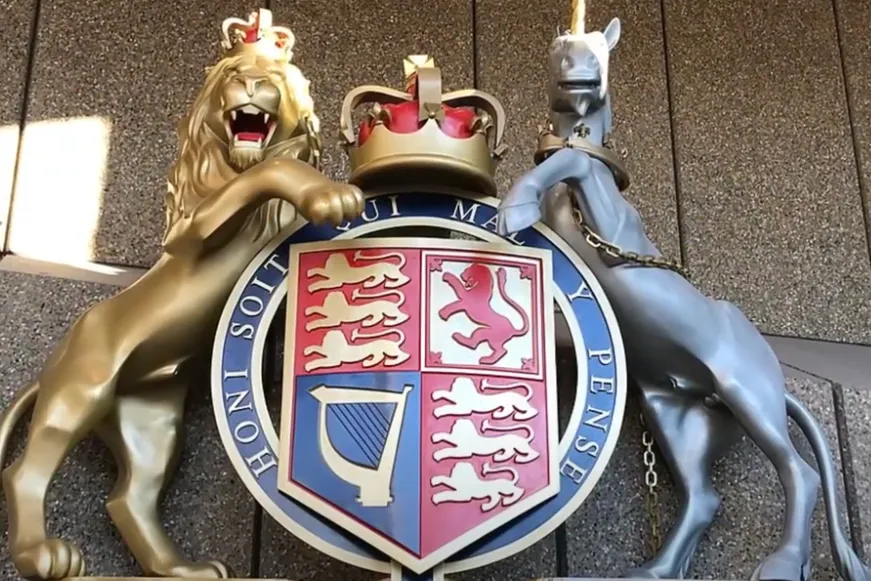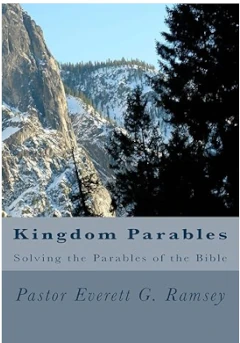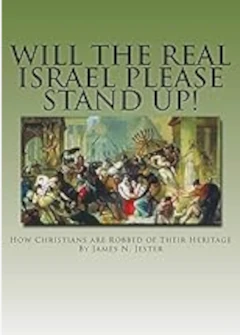Identifying Israel - Part 7
Out of Asia and Into Europe
By Jim Jester
Complete series available in book format: Will the Real Israel Please Stand Up?
“And the LORD shall scatter you among the nations…” Deut. 4:27
The fall of Parthia
The Sassanian Persians conquered the Parthian Empire in 226 A.D. So where did such a large and widespread group of Parthian Israelites go? Many men were killed in the two preceding wars; the Parthian-Roman War of 216-217, a Parthian victory, and the Parthian-Persian war, three battles of rebelling Persians beginning 220 A.D. ending 226 A.D. with a Persian victory. The Sassanian Persians acted quickly to expel Parthians from the region, completely destroying the city of Hatra which would not recognize Persian rule. They also killed all Arsacids (royal family) they could find. Anyone opposing their authority had reason to fear for their lives. The Parthians really had no place to go but toward the northwest. To the west was the Roman Empire, to the south were the Arabian Desert and the sea, to the east and northeast were the expanding oriental populations which had driven other Scythians westward into Parthia centuries ago.
To the northwest they could expect to find refuge because of their kinsmen, the Scythians. Also, the Parthian rulers had established good relations with the Dacians of eastern Europe, who were also enemies of Rome. But the best reason to migrate to the northwest was because of Parthia’s farthest province, which had repelled the Persians in battle and retained their independence and Arsacid ruler! That province was Armenia and it was there that “a number of the princes [of Parthia] found refuge in Armenia, where the Arsacid dynasty maintained itself till A.D. 429.” (Encyclopedia Britannica, The Sassanian Empire, p. 580)
The new Persian ruler, Ardashir, “devoted his attention to the … strengthening of the national religion. He caused the idols of the Parthians to be destroyed and ordered a general restoration of the doctrines of Zoroaster throughout the empire.” (Benjamin, Persia, p. 174) The Persians were non-Semitic and regarded Semitic religions and culture as a threat to their rule, so the logical assumption is they sought to kill, or harass Semitic populations. The Persians had also attacked Kerman and Media because they felt they were natural religious and racial allies of Parthia. Since the Persians were expunging all Semitic culture and religion from their new Zoroastrian-Persian empire, these populations had no choice but to flee towards the Caucasus Mountains of Armenia.
Armenia had already been evangelized by Christianity. “…All Christian churches accept the tradition that Christianity was preached in Armenia by the Apostles Thaddeus and Bartholomew in the first half of the first century …Armenia was among the first to respond to the call of Christ so early. Armenia became the first Christian nation in the world. Christianity was officially proclaimed in 301 A.D. as the national religion of Armenia. King Tiridates, together with the nobility of his country, were baptized by St. Gregory the Illuminator.” (The Search for the Twelve Apostles, McBirnie, p. 199) This too was a very good reason to migrate to Armenia.
This shows us once again how skewed history sometimes can be since history is written by the conqueror. We have always been taught that Rome was the first to adopt Christianity and that they were the most civilized and advanced culture at the time, implying most others were “barbarians.” Portions of Parthia were Christianized centuries before Rome. When the Arsacid king of Armenia adopted Christianity it was in full support of his nobility and people. But when Constantine later declared for Christianity, he had to move his capitol to Constantinople due to Roman resistance to Christianity. The Encyclopedia Britannica, (V. 6, “Constantine”, p. 298) states:
“It is probable that this step [moving the capitol] was connected with Constantine’s decision to make Christianity the official religion of the empire. Rome was naturally the stronghold of paganism, to which the great majority of the Senate clung with fervent devotion.” (Emphasis added)
Most Romans wanted no part of Christianity when Constantine adopted it. In moving his capitol to the east he was moving closer to a region of Christian political strength.
Not all of the Parthians stopped in Armenia; some went as far as eastern Europe since the Scythians had been there for many centuries. Rice states in The Scythians (p. 189):
“Scythian influence first made its mark in Hungary round about the year 500 B.C. when the foremost wave of Scythians penetrated to the area.”
One Russian history concerning the Scythians says that Scythian presence in the Ukraine dates to the “late seventh and sixth centuries B.C.” (Boris Piotrovsky, Scythian Art, p. 5) Not all Parthians could possibly fit in Armenia. This area northwest of the Black Sea could hold an immense number of refugees. “The main movement from Asia into Europe which went north of the Caucasus was in early times that of the Scythians.” (Britannica Vol. 12, p. 263)
Since it is a well-established fact that the Parthians and Scythians were related tribes, the “Scythian” migration into Europe would have included masses of Parthian refugees during the third century A.D. and afterward. Separated from their homeland they quickly lost the name “Parthian.”
The Goths
Large numbers of Israelites fled north of Armenia when the kingdom of Israel fell in 721 B.C. and were called the “Gauthei.” Later the Greeks called them “Getae” or “Scythians.” Parthian refugees settling among their Scythian kinsman in eastern Europe would also be known as “Getae.” The Dacians were also known as “Getae.” (Britannica Vol. 6, “Dacia”, p. 969) This region north of the Black Sea had been occupied by the descendants of the ten tribes of Israel for almost a millennium by the time the Parthians moved in that direction. Was all this coincidence or was it God “herding” his “lost sheep” in the direction He wanted them to go and positioning them for the future as Moses predicted in Deuteronomy 4:30? Collins in The Lost Ten Tribes of Israel Found (p.328) paints this picture for us:
“Since the fall of Israel and Judah, the Israelite tribes in Asia had been scattered from Eastern Europe to southern Russia and western India, and were known as Scythians, Sacae, Saka, Getae, Parthians, Massagetae, etc. The easternmost Israelites had been pushed southwestward when the Massagetae and other Sacae migrated out of central Russia into Parthia. With the fall of Parthia, and the flight of its Semitic people into Armenia, the descendants of the ten tribes of Israel were compressed into a region the shape of a crescent (from Armenia, between the Caspian and Black Seas, around the Black Sea on the north and southeastward toward modern Rumania and eastern Hungary). For the first time since the fall of the old kingdom of Israel, the ten tribes of Israel who had scattered into Asia were now mostly together again.”
In 256 A.D. Gothic tribes “crossed the Carpathians and drove the Romans from Dacia.” (Britannica Vol. 6, p. 970) Here we have, in the same century that the Parthians sought refuge among their brethren; a formidable number of people crossed the Carpathian Mountains and came into Dacia. It would seem likely then that the Goths were Parthian refugees. “The Goths came and dwelt in the land of the Getes (Dacia), and…mingled with the native inhabitants; and so the Romans came to think that Goths and Getes were only two names for the same people….” (Henry Bradley, The Goths, p. 19) This Gothic historian regarded the Goths and Getes (the Getae) as related tribes of the same heritage. Since this was a peaceful assimilation it stands to reason these tribes were closely related. Since the “Getae” lived in the Black Sea region before the “Goths” arrived, the conclusion seems inescapable that the “Getae” were Scythians who had lived there for centuries and the newly-arrived “Goths” were Parthian refugees fleeing Asia to find new homelands among their Scythian brothers. Classical writers such as Pliny, Stephanus, Iornandes (Jordanes) and Herodotus regarded the terms Dacian, Getae, Getes, Gothi, and Scythian as denoting the same people whose homeland was near the Black Sea.
The Dacians (Getae) were unwilling subjects of the Roman Empire. Parthia’s refugees, now called Goths, would have been very anti-Roman because some of them lived through (and they all knew about) the Roman treachery under Caracullus which led to such a costly war that the Persians were able to revolt and destroy the Parthian empire. The combining of the two populations resulted in a powerful force of Goths which liberated Dacia from the Romans barely thirty years after the fall of Parthia.
Not all the migrating Parthians and Scythians came to be known as Goths. Many became known as “Teutons,” “Germans,” “Vandals,” “Saxons,” etc. The Scythian/Parthian people had been known as “Sacae” for over a millennium. Some refugees were called “Saxons” by the Romans. It is the same phonetic sound as “Sac’s sons” (representing Isaac’s sons). The English word uses a Latin “x” but the German word for “Saxon” is “Sachsisch” or “Sachse.” The Bible predicted that Isaac’s name would be on the Israelite tribes, Ephraim and Manasseh in Genesis 48:14-16. Since these migrating Saxons (alias Persians, Scythians) still bore the name of Isaac as they migrated into Europe, it indicates they were primarily the tribes of Ephraim and Manasseh.
In this same time frame in which the Goths made a direct attack on Rome, the Saxon’s and other allied tribes chose to migrate along the northern border of the empire into Europe. The Saxon’s, as well as Goths and others from the former Parthian/Scythian culture, used spears, bows and arrows, and body armor proving they were skilled in metallurgy, not ignorant nomads. While their weaponry was traditionally Parthian they did not use the horses in battle since they were needed for hauling families and possessions. Sometimes horses were eaten as was typical of migrating tribes. The initial Saxon dependence on piracy or hiring out as mercenaries shows a measure of desperation on their part in order to feed their families. A tribe may have found a good location to grow crops or hunt game only to be pushed out by a stronger tribe moving into their area. It certainly was a difficult time for masses of people. Migration into Europe took decades or centuries as it moved at the speed of an oxcart.
There is evidence that the word “Goth” comes from the Gothic word “Guth,” which meant “God.” (Bradley, Ibid, p. 5) They both have the same consonants and languages descended from the Gothic (English and German) also describe the deity (God and Gott). The older version of the word “Goth” was “Gauthei” which was from two words, “Gut” and “thiuda” (people), thus meaning “people of God.” Once it is understood that they were the descendants of the ten tribes of Israel, this terminology makes sense. Evidence is given by Col. J. C. Gawler, an official of the British government in the nineteenth century, in quoting a book by M. Sailman (written 1818) entitled Researches in the East, (p. 9) wrote:
“It states on page 25, that ‘on the authority of several Armenian historians, the ten tribes passed into Tartary.’ It also quotes Ortellius, who, it says, ‘in his description of Tartary, notes the kingdom of Arsareth, where the ten tribes retiring…took the name of Gauthei’ because, he says, they were very jealous of the glory of God.”
The Goths became so large, being infused by migrating, anti-Roman Parthians, that Rome began paying tribute money to deter them from attacking. One historian (Bradley, The Goths, p. 24) reports that Rome began cash payments as soon as “about twenty years [prior to]…245 A.D.” This would bring the start of Rome’s payments to the timeframe of 226 A.D., the very year the Parthian Empire fell!
When Rome stopped paying tribute money the Goths moved in to take land for themselves. In 249-251 A.D., the Roman emperor Decius led an army to oppose the Goths. In 251 they were ambushed by the Goths and Decius was killed and his Roman army routed. (Burns, A History of the Ostrogoths, p. 27) If the Goths were simply a hoard of undisciplined nomads they would have been no match for the Romans; especially under the Emperor himself, rather than a General. This shows us that the Goths had a strong military background, which we would expect from Parthian refugees who had fought Rome for centuries.
The body of the Roman Emperor, Decius “was never found” (Bradley, p.28). Just before the battle of Nisibis in 217 A.D., the Romans had desecrated the graves of Parthia’s emperors and scattered their bones. The vengeful Parthians (now called Goths) evidently scattered the Roman Emperor’s body into such small pieces it couldn’t be found. Certainly a lesson in reaping what you sow. Rome’s bitter harvest had only begun.
One of the first provinces of Parthia to be attacked by the anti-Semitic Persians was Carmania, the home of the Kermans. Later transplanted in Europe they were called “Germans.” The name “Carmania” became “Germania” a general name used by the Romans to describe many similar tribes. (Brittanica, Vol. 17, p. 500 map) There is an account of Herodotus (The History, 1, 125) which supports the conclusion that the Kermans and the Germans were the same people. He says the “Germanii” were a subject people in the old Persian Empire of Achaemenids, which predated the Roman or Parthian empires. The “Germanii” and the “Carmanians” were two names for the same people, linking them to the Parthians. (Britannica, Vol. 17, p. 611) As the reader can see the name “Germanii” was almost unchanged as it became “Germany” in Europe.
The Roman historian, Pliney (Dilke, Greek and Roman Maps, p. 46) wrote, “…the name of the Scythians has altogether been transferred to the Sarmatae and the Germans.” One of the largest Sacae Scythian tribes which migrated out of Asia in the second century B.C. to merge with Parthian Empire was the Massagetae. They were most likely the descendants of the Israelite tribe, Manassas, with the suffix “-getae” to indicate a common origin with the “Getae” of the Black Sea region.
Another point that identifies Goths as Parthians is that they selected their kings according to Parthian tradition, i.e., from any Arsacid noble. Many have the impression that the Roman Empire at the time was the last stronghold of western civilization and that Rome’s conquerors were uncivilized. This is all Roman propaganda put into our history books. Collins gives this account:
“Alaric was a Visigoth noble from a princely family who had originally served in Rome’s army leading Goths in Rome’s service. When a new Roman emperor abrogated the pay agreements of a previous emperor, these Goths rebelled and Alaric became their king. Alaric conquered most of Greece and the Goths again spared Athens which paid them tribute money and gave Alaric a banquet! Alaric was even made a military governor by the emperor of the Eastern Roman Empire at Constantinople. Alaric invaded Italy in 400 A.D., but was repulsed two years later when his Christian Goths were observing Easter Sunday and falsely assumed that the Romans would not attack on that day. The Romans then made (and quickly broke) a treaty with Alaric. The Romans then expelled (as heretics) some 30,000 Goths who were Arian Christians from the Roman army while Roman mobs massacred the wives and children of these Arian Goths. This heinous crime by the Romans compelled the 30,000 Goths expelled…to join Alaric’s army. Alaric besieged Rome but left after Rome paid him 5,000 pounds of gold, 30,000 pounds of silver and other costly items. While Alaric’s army was on Roman soil, it behaved with incredible restraint, given the Roman slaughter of the families of 30,000 Goths.”
“Alaric did not permit a general massacre of the Roman citizens. ‘Alaric remembered that he was a Christian and he tried to use his victory mercifully. He told his soldiers that the plunder of the city was theirs, but that no man was to be killed who was not in arms; even of the soldiers, all were to be spared who took refuge in the churches…all the churches and their property were to be held sacred…some of the Roman writers speak with wonder of the moderation of the Goths.’ (Bradley, p. 96)”
This was an amazing Christian restraint of the Gothic army whose families had been murdered by the supposedly Christian Romans. Since history is full of examples of “Christians” doing very unchristian things to others, Alaric’s actions were exemplary.
One group of Goths went completely across Europe and into Africa. They were known as Vandals and developed remarkable maritime skills, building a fleet of ships and dominating the Mediterranean for about 30 years. In 455 the Vandals, under Gaiseric, sailed across the Mediterranean and conquered Rome. Legends about their destruction of Rome have led to the modern term “vandalism,” but the truth is they don’t deserve that awful reputation.
“He [Gaiseric]…for 14 days, in a calm and business-like manner, emptied it [Rome] of all its movable wealth…There does not seem to be in the story of the capture of Rome by the Vandals any justification for the charge of willful and objectless destruction of public buildings which is implied by the word ‘vandalism.’ It is probable that the charge grew out of the fierce persecution which was carried out by Gaiseric…against the Catholic Christians. The bishops were almost universally banished, and the congregations were forbidden to elect their successors.” (Encyclopedia Britannica, Vol. 22, p. 971)
The Vandals were recorded as being Arian Christians. “Arian” identified them as followers of Bishop Arius (not “Aryan”). The city was not destroyed nor were there any massacres as Rome had done many times. Their banishing of Catholic priests was very mild “persecution” compared to what was going on during the Inquisition of the Middle Ages. Also, it was “poetic justice” that the Vandals conquered Rome from their base in Carthage, when for generations Carthage had wanted to take Rome.
The Vandals ruled Carthage for almost a century and saw themselves as punishing instruments in the hands of God. Gaiseric, the Vandal leader, said that the Vandals attacked “the dwellings of the men with whom God is angry.” Bradley’s account says that a seven-branched candlestick and other sacred items from the Jerusalem Temple were taken by them. Rome had taken them in 70 A.D. when they took Jerusalem. Since the Vandals were Christians it is likely they considered these items from the temple as highly sacred objects worthy of protection.
The Goths were generally recorded as being tall, blue-eyed blondes with fair complexions. (Bradley, The Goths, p. 9) The term “Caucasian”, referring to the White race, is not a scientific name but actually reflects the historic fact that many tribes of white nations migrated through the Caucasus Mountains as they moved from Asia into Europe. The Parthians and Scythians were of the White race, evidenced by portrayals of themselves on their artwork and coins. Their forced migration out of Parthia toward Europe was one of the largest in all of human history.
The classical writers of Greece and Rome had much to say about Parthia, and extensive histories of Parthia were written in the nineteenth century. But twentieth century history books increasingly ignore Parthian history. Parthia was a massive empire of Semitic (White) people, yet history texts are unwilling to connect the fall of Parthia with the arrival of many White refugees arriving in Europe right after the collapse. Is it really so hard to figure out? Masses of Parthians “suddenly disappear” from their homeland, yet large groups of Saxons, Goths and related German tribes “suddenly appear” in Europe?












